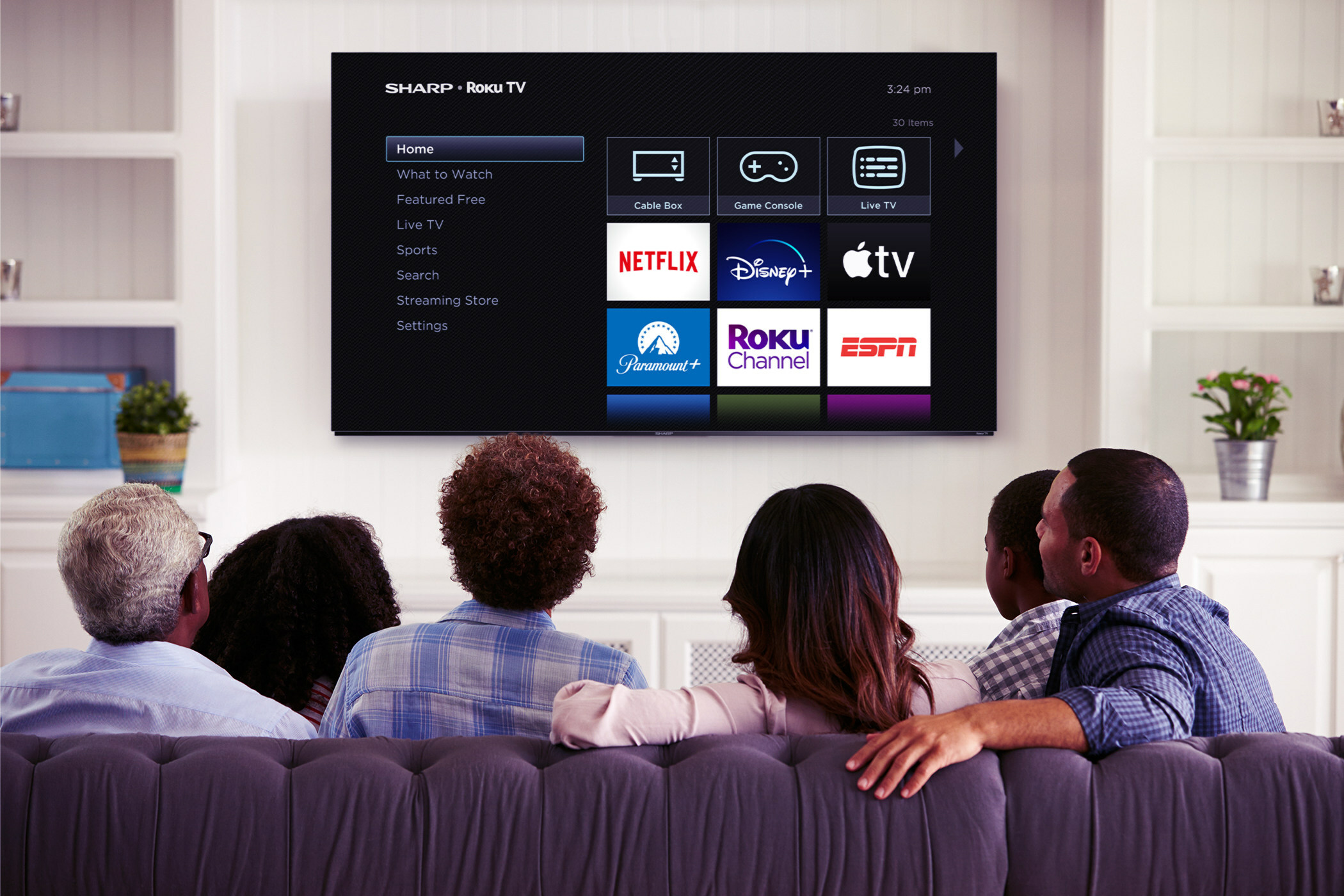Fox Sports Daytona 500 Coverage To Take ‘XtraMotion’ To Next Level
On-prem generation of XtraMotion will make more super slow-motion shots available for 'The Great American Race'
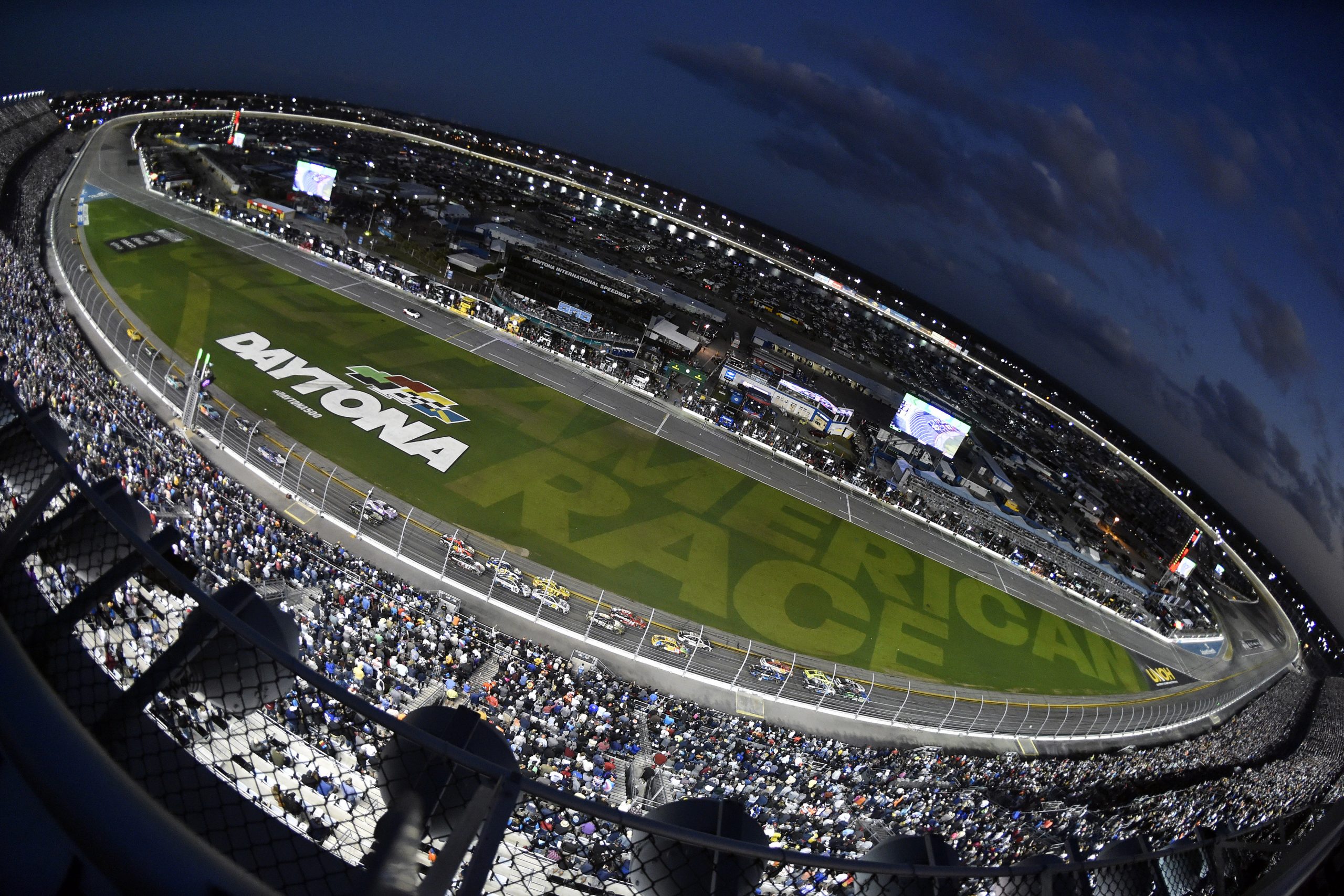
DAYTONA BEACH, Fla.—Fox Sports will deploy XtraMotion, its super slow-motion interpolation technology co-developed with EVS, on prem for the first time during a NASCAR race Sunday, Feb. 19 for its coverage of the Daytona 500.
(Coverage of the Daytona 500, aka "The Great American Race," begins on Fox and Fox Deportes at 2:30 p.m. EST. Coverage is also available on the Fox Sports app, Hulu + Live TV, Sling TV and fuboTV.)
First deployed for the race in 2021, XtraMotion processing at that time was done offsite in the AWS Cloud where a theoretically limitless number of CPUs and GPUs created new video between frames shot at normal speed to synthesize slow motion. XtraMotion, in essence, turned every camera into a super slow-motion camera.
The downside, however, was depending on the cloud to interpolate the frames remotely. The distance introduced latency that required the broadcaster to be judicious about how it integrated XtraMotion footage into its coverage.
Stoppages in the race due to crashes, for example, gave Fox Sports the time needed—as much as five minutes—to generate the synthesized super slow-motion footage and have it ready to insert into the production. Having XtraMotion processing available in a rack-mounted device on-site changes that.
“What's cool about having XtraMotion processing on site is that, when something happens, you send video to the XtraMotion processor, and then it turns back up in your EVS playlist as a 3x super motion clip, and it does that in five seconds,” says Michael Davies, senior vice president of field and technical operations, at Fox Sports.
It’s going to be amazing for in-car [cameras] because obviously we can’t do in-cars as super motion. I’m really looking forward to seeing how often it gets used because of how quick the turnaround is."
Michael Davies, Fox Sports
Generating XtraMotion on prem also enables the system to treat incoming source video as a “growing clip,” which means there’s effectively no limit to the length of the super slow-motion interpolated segment.
Get the TV Tech Newsletter
The professional video industry's #1 source for news, trends and product and tech information. Sign up below.
“It’s going to be amazing for in-car [cameras] because obviously we can’t do in-cars as super motion,” he says. “I’m really looking forward to seeing how often it gets used because of how quick the turnaround is.”
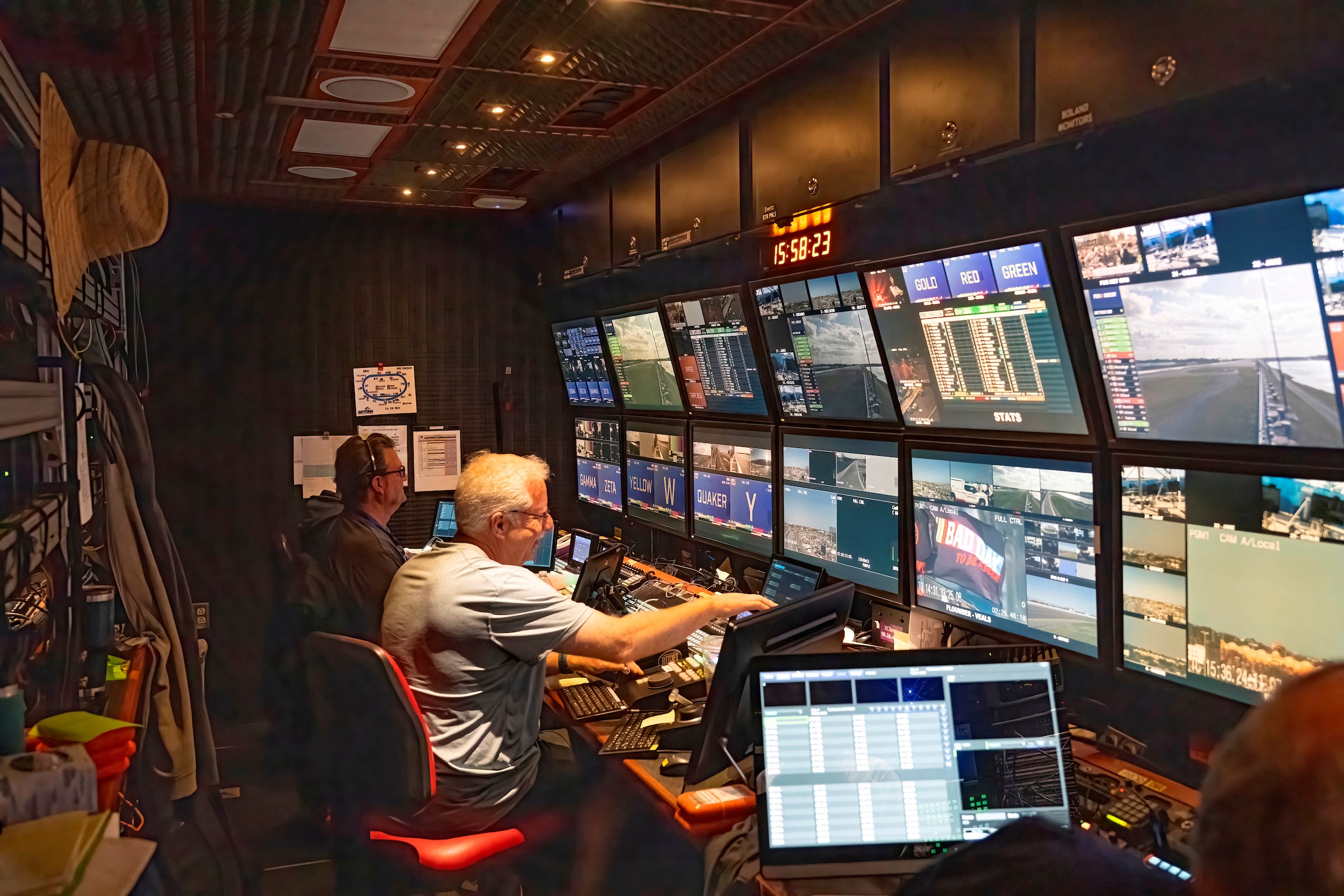
Helmet Cams
The Great American Race will also see the first use of video cameras integrated directly into the helmets of drivers to give viewers a driver’s eye view of the race rather than relying on vizor helmet cameras that were temporarily attached to the head protection, he says.
“Racing Force is the company behind Bell Helmets, and they have the knowledge to execute the integration of the cameras,” says Davies.
Fox Sports, which will shoot the Daytona 500 in 1080p HDR, will rely on an extensive complement of cameras (see Camera Map), including several drone cameras from Beverly Hills Aerials.
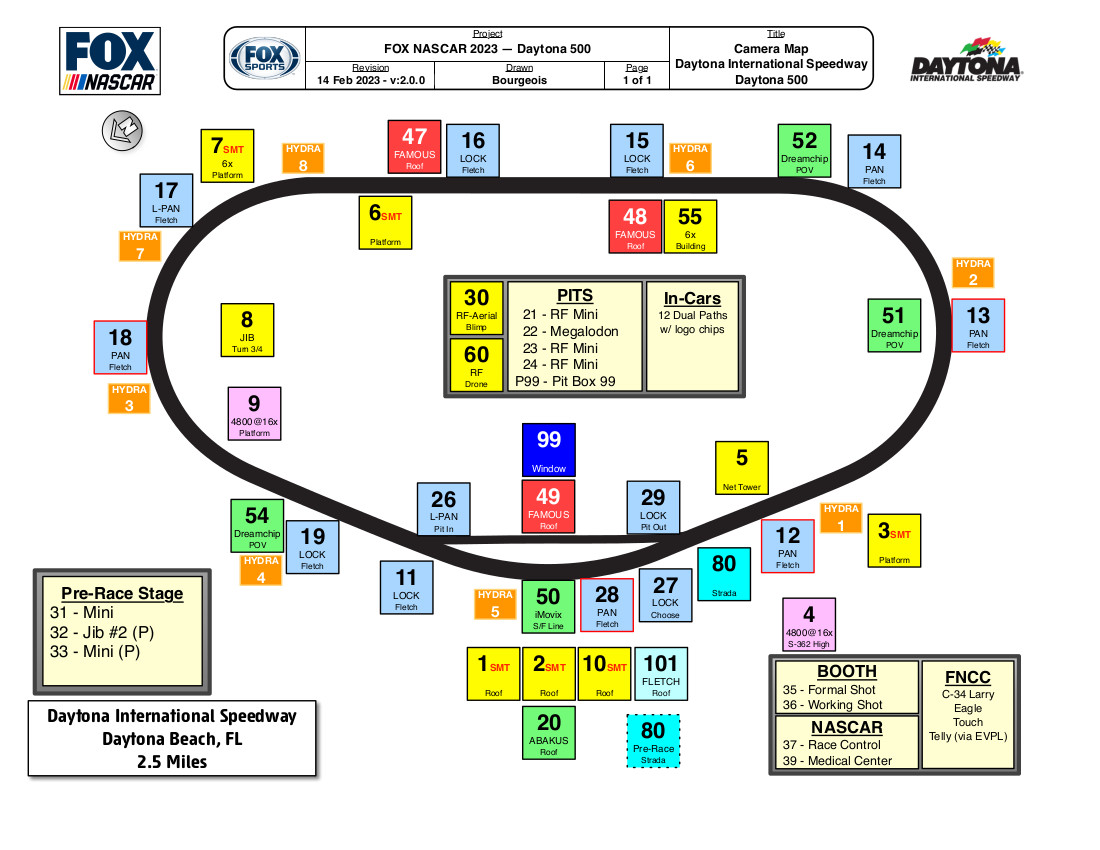
“Beverly Hills Aerials, which we have worked with in the past, brings several different types of airships, each used for a different purpose,” says Davies.
Those include the small, lightweight Hummingbird drone that can fly around people with their permission, the FPV high-speed drone used in NASCAR straightaways due to its speed and a heavy-lift drone.
“The heavy-lift drone is a big, multiple rotor aircraft with a stabilized camera—a real 60- to 70-pound camera,” says Davies.
Davies draws a distinction between how drones are used in race coverage when compared to other sports. “The interesting thing about racing is that unlike stick-and-ball sports where drones are basically used to generate glorified feature beauty shots, auto racing can actually use drones to as actual coverage cameras,” he says.
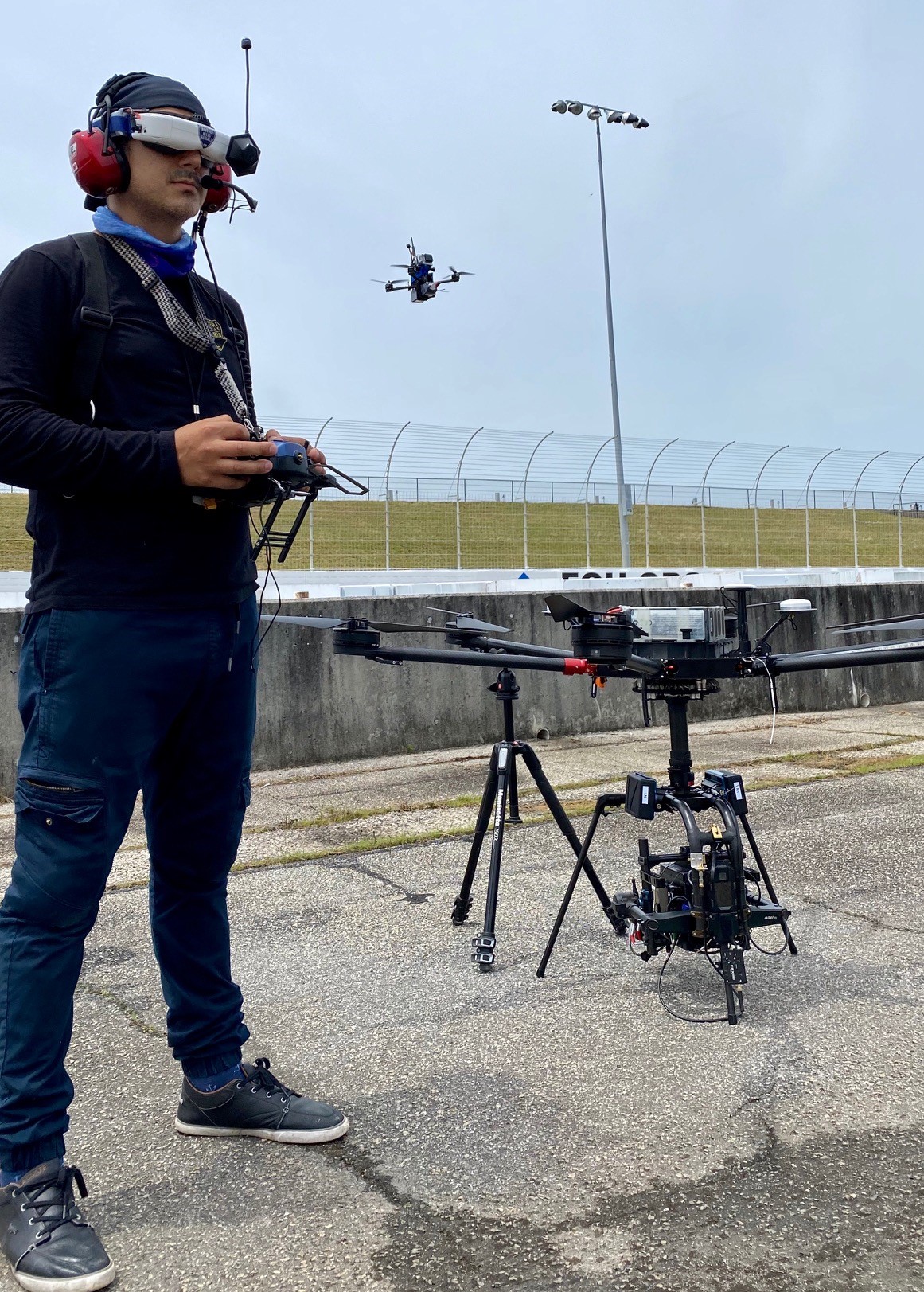
The difference is the size and setup of the raceway, which makes it possible to fly the drones along large, unpopulated corridors to capture race footage without flying over people, says Davies, who adds that every year the industry is achieving more trust among regulators at the FAA by demonstrating drones can be used safely even when thousands of people are nearby in the stands.
Can You Hear Me Now?
Radios in NASCAR that let fans hear the drivers are nothing new, but efforts continue every year to improve the quality of this audio to enhance the experience of viewers, says Davies.
Doing so is a mix of technology and how personnel are allocated. On the technology side, audio compression helps make the conversations on the two-way radios clearer. When it comes to personnel, Fox Sports dedicates one person to a radio submixer whose only job is to “pepper in actual talk,” he says.
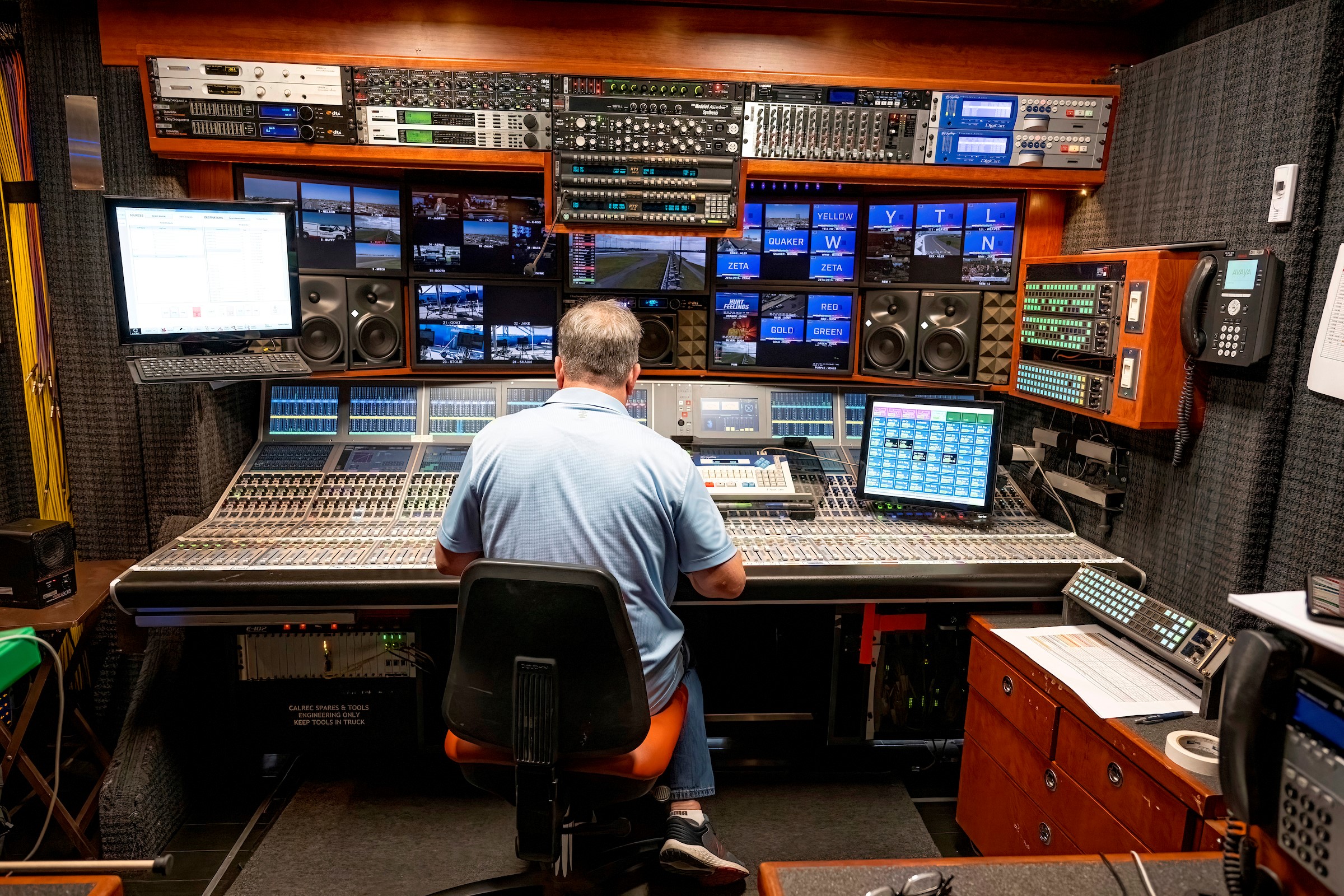
“Then we actually have a racing radios editor, who is actually in his home in Georgia. He listens to the radio and actually plays it back, depending on what the content is,” says Davies.
The Fox Sports senior vice president adds that work is underway on a project that sometime this race season aims to add captions to those conversations. “We’re working with Veritone on that project. It’s a difficult challenge. By the nature of radios not being that great of a source when it comes to quality, generating those captions is going to be a feat.”
Distributed Workflow
While there are 30 to 40 Fox Sports production personnel on site, NASCAR production has transitioned over the past few years to a distributed model workflow. The broadcaster will leverage production personnel in the Fox Sports Vault in Los Angeles, others in Pittsburgh and still others at its Charlotte, N.C., NASCAR studio. There is also a video editor as well as the racing radios editor and racing radios mixer who will be working from their homes, says Davies.
“This is the thing about NASCAR, every year for the last four years, I’ve lost an entire truck from our compound,” he says. “What you see today compared to 2018 is four fewer trucks, and we are doing exactly the same show, if not more.”
The main production vehicles on site are Game Creek’s Cleatus A and B units, which will be used by Fox Sports and NBC Sports throughout the NASCAR racing season. While an SDI-based truck, SMPTE ST 2110 is playing a big role on site for distribution although “the core is still good-old SDI,” he says.
What really drew attention to the decline in the number of trucks on site in Davies’ mind was a conversation he had with a younger crew member. “I was talking to one of the kids who hadn’t been here before, and I recounted the days when we had ESPN and DirecTV here—literally 20 trucks in the compound. But it’s not like that anymore.”
“At this point, I’ve kind of hit rock bottom,” Davies adds with a chuckle. “I wasn’t able to lose another truck this year.”
More information on XtraMotion is available on the EVS website.
More information on Bell Helmets is available online.
More information on video production drones is available on the Beverly Hills Aerials website.
More information on Veritone is available online.
Phil Kurz is a contributing editor to TV Tech. He has written about TV and video technology for more than 30 years and served as editor of three leading industry magazines. He earned a Bachelor of Journalism and a Master’s Degree in Journalism from the University of Missouri-Columbia School of Journalism.

